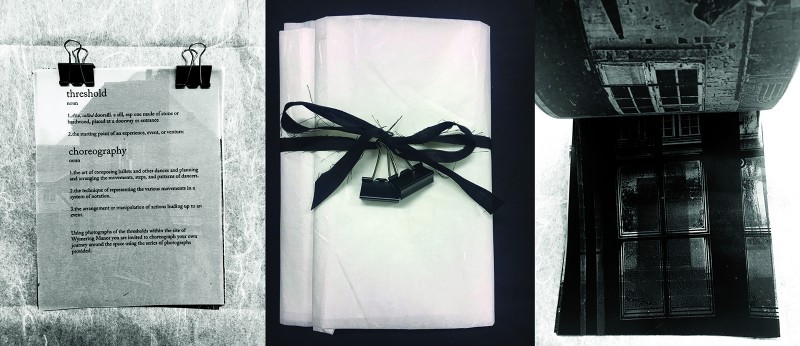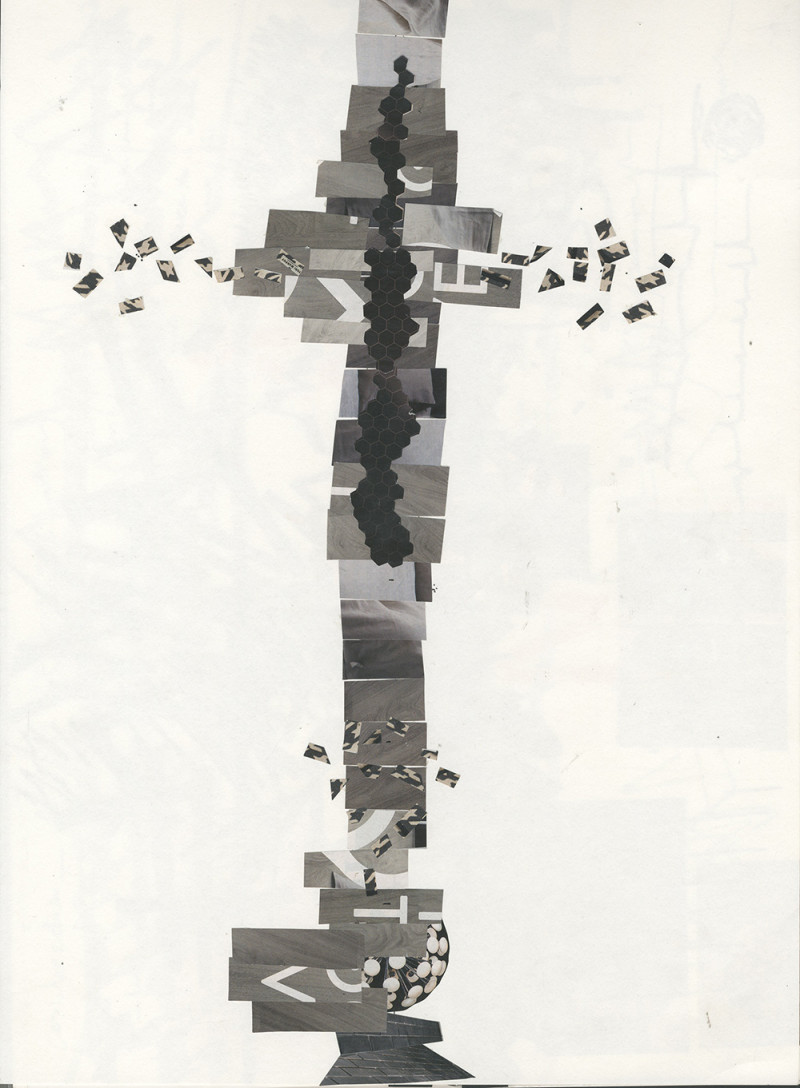Lines between: writing/drawing, space and the artist’s book
Abstract
Lines between: writing/drawing, space and the artists’ book is an interdisciplinary exchange between Interior design and Illustration. The artists’ book acts as a hinge between 2D drawing/writing practices and 3D space to generate material propositions for major project briefs and to develop new forms of disciplinary representations. The book supports an engagement with space that is located in embodied experience and the generation of ideas through the dance of writing, the play of text and the tactile engagement with visual images (figure 1).
The BA Interior Architecture and Design course at the University of Portsmouth uses interdisciplinary process to support students to engage with interior texts, theories and subject representations. We draw on work from the artists’ book collection in the Illustration department and the ‘Ministry of Books’, an online library at UoP [1]. The project uses creative writing practices, drawing and photography to generate the beginning of third year, final major project design briefs and to support MA Interior Design students to engage in embodied research methodologies. “All books are tactile and spatial as well – their physicality is fundamental to their meaning. Similarly, the elements of visual and physical materiality participate in a book’s temporal affect – the weight of paper, covers, endpapers or insets, fold-outs or enclosures all contribute to the experience of a book” [2]. These qualities are interior pre-occupations and in an age of digital representation the book encourages play with material and immaterial matters to create poeticised affects in architectural space.


The Ministry of Books is a physical collection of approximately 250 books, held in the Illustration department at the University of Portsmouth, which can be viewed online with open access to students from all courses (see figures 2 and 3). The physical access for students to these books is vital through interaction with the real object. To ‘read’ an artists’ book requires intimate engagement. What became obvious when watching and appraising student reaction to their introduction to this medium is their absolute delight to this tactile experience. Artists’ books test our senses through the quality and smell of the paper, sounds as we open, reveal and unfold. They need to be examined and inspected closely for construction techniques, the method of printing and binding. Many of the physical attributes are not often visible. How the books are contained - often coming with specially created cases or containers to help in the storage, protection and transportation - becomes an integral part of the production. The relationship between the viewer and book is an intimate one where time and concentration is required. Many of the books in the collection are not ‘book like’ or follow the codex system. A number of the books are interactive creations where intimacy, haptics, text, sequence, space, shape and form become critical elements offering a dynamic experience for the reader to evoke memories, emotions and sensations [3].

Figures 4 and 5 show examples of artists’ books from interior design students in BA3. Mohammad Mostakin explored the performance of the artefact through the opening of a black fabric A3 archival box, and the unwrapping of printed crinkly white tissue paper, to reveal a crisply starched white shirt and a letterpress calling card slipped into its breast pocket. Mollie Hayter produced a set of images of Wymering Manor, a historic site, wrapped in paper and black book cloth. She provided two large bulldog clips and invited the audience to curate a set of images printed on cartridge, tracing paper and acetate in order to choreograph their own journey through the house and its many thresholds.

At MA level, students worked collaboratively with the MArch Landscape studio at Chawton House Library, Alton, a centre for early women’s writers, to explore the landscape and inscapes of the site (see figures 6 and 7). The collaborative work produced a collection of ‘chapters’ keyed to a journey relating to a series of interventions around, on, in and under the site. In its closed form individual stories were tucked into a box, while the opening of the book supported an unfolding of the scenes into laser cut paper and a tunnel book. The work created a horizontal plane away from the binary of inside and out that is the norm at historic sites and in architectural practice.
The artists’ book encourages engagement with issues of interiority, of material matters, and asks students to question their disciplinary gestures in order to find alternative modes of representation. “The very method we use to develop architectural proposals – orthographic drawing – describes only form, and relegates material to the empty spaces between the lines” [4]. The book opens out the space between these lines through haptic engagements and material play to develop alternative patterns of practice and ways to represent and re-imagine interior space through the “…condensations of distinct architectural essences” [5].



